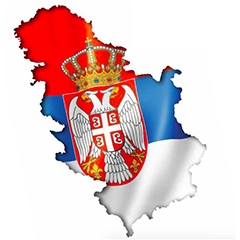Total onshore wind installed capacity in Serbia will rise from 102.5 Megawatts (MW) in 2015 to an estimated 522 MW by 2025 says a recent report, and we at PES are inclined to agree – the country has displayed an appetite for wind in recent years that is set to continue. We take a look at the story behind the headlines…
The total onshore wind installed capacity in Serbia will rise from 102.5 Megawatts (MW) in 2015 to an estimated 522 MW by 2025, boosted by several new projects and the government’s new Energy Law, which came into effect in January 2015, says the research and consulting firm, GlobalData.
The company’s latest whitepaper states that while this increase will occur at an impressive Compound Annual Growth Rate (CAGR) of 48%, Serbia will reach approximately 250 MW of onshore installed capacity by 2020: only half of its 500 MW capacity cap for wind energy by that year.
According to Sneha Susan Elias, GlobalData’s Analyst covering Power, Feed-in Tariffs (FiT) are the major support program for Serbia’s electricity production from renewable energy sources and will help drive growth in the wind sector.
Elias explains: “Plant operators must hold Privileged Power Producer (PPP) status in order to receive the appropriate price support for electricity generation in accordance with legal requirements.
“Following completion of the power purchase agreement with the plant operator, Serbia’s state-owned power utility company, Elektroprivreda Srbije, is legally obliged to purchase the total electricity produced by PPPs at an incentive price. Technologies eligible for FiTs include hydropower, biogas, biomass, geothermal, solar and wind power.”
The analyst adds that while wind made up less than 0.1% of Serbia’s power generation mix in 2014, investors are beginning to harness the excellent wind power potential in the regions around the mountains Jastrebac, Stara Planina, Kopaonik, Juhor, Suva Planina, Tupižnica, Ozren, and Vlasina, as well as the town of Vršac and village of Krepoljina.
Elias continues: “As wind is the cheapest form of renewable energy, apart from mini hydro, Serbia is seeking to take advantage of this power source as it bids to become part of the European Union and achieve a target of 27% of its energy mix coming from renewable sources by 2020.



























